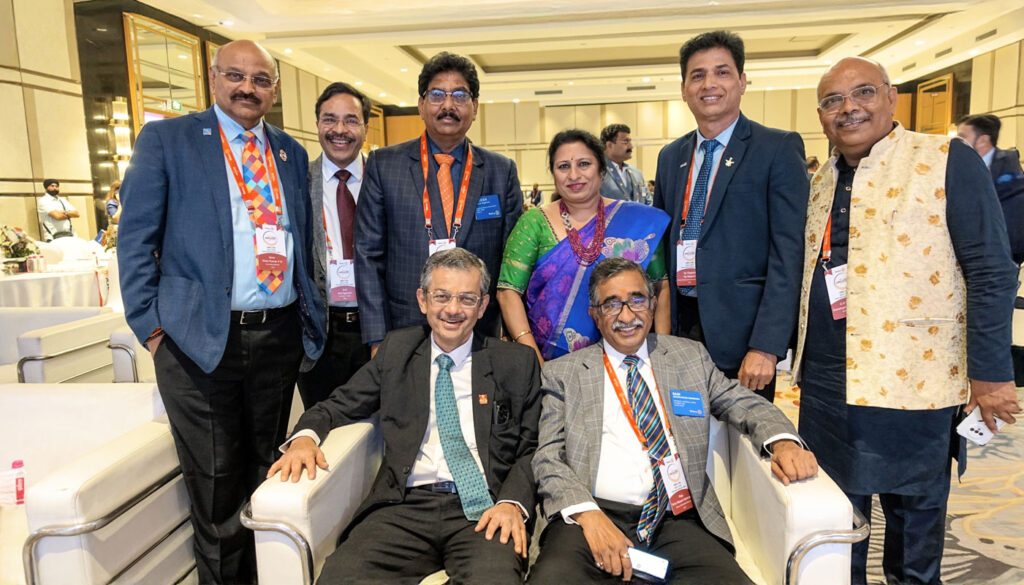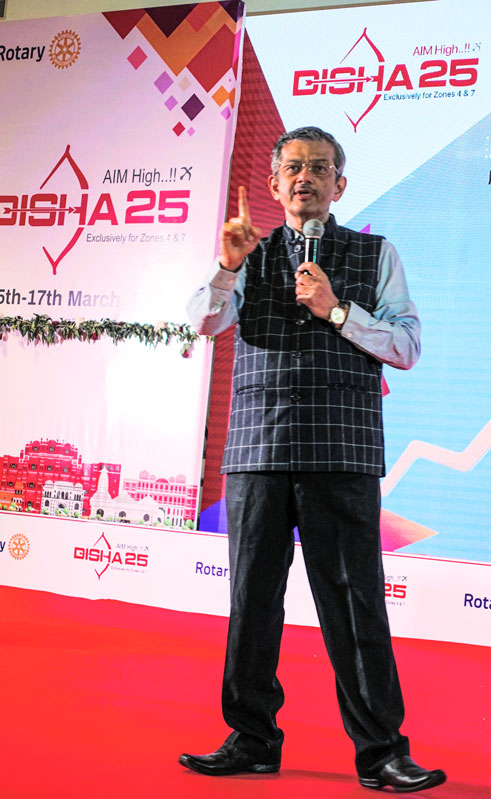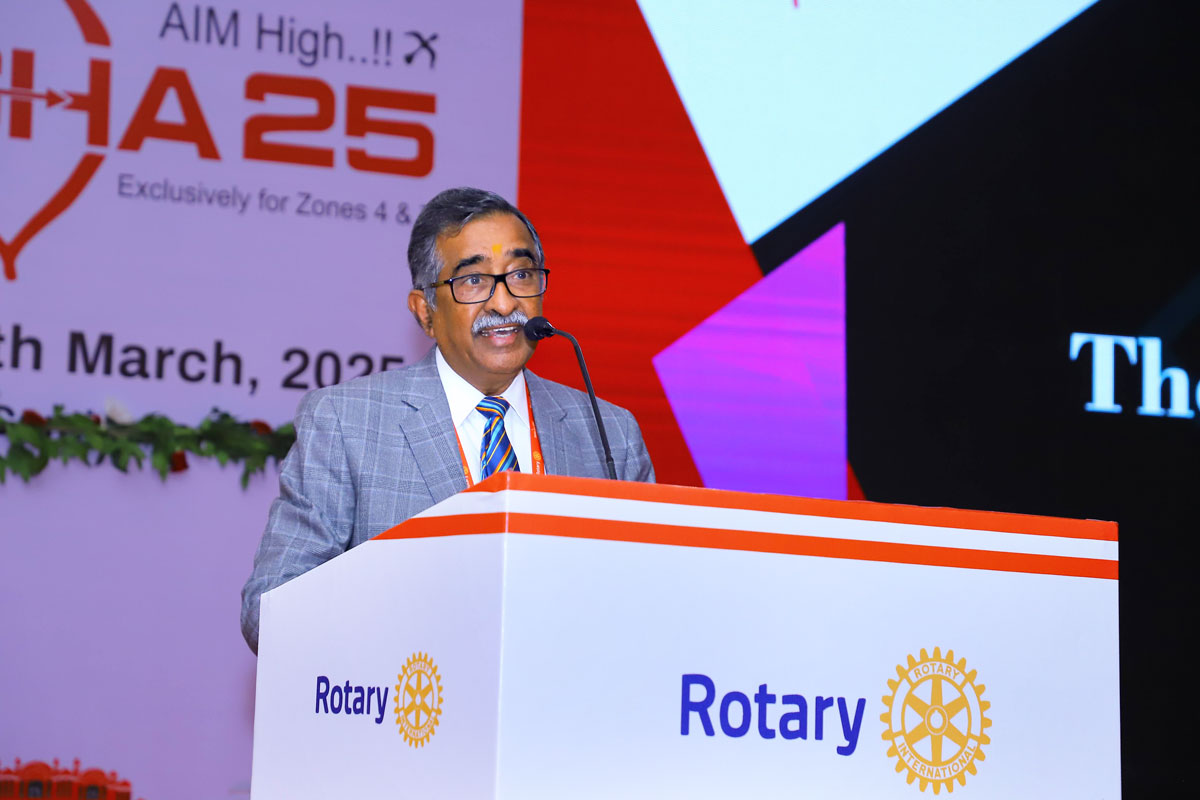At the recent Disha conclave, a goal-setting seminar, held in Jaipur for the incoming governors of Zones 4 and 7, the one message that was given by every leader was to focus on Rotary’s membership with the central aim to attract new members, retain existing ones, increase the gender balance in Rotary in India and swell the number of Rotaractors and Interactors.

Addressing the inaugural session on the topic TRF, a catalyst for growth, TRF Trustee Bharat Pandya said “The most important thing in Rotary is membership; it is at the core, at the heart of Rotary, whether for community service, public image or TRF. Rotarians are at the heart of Rotary and TRF is the backbone of Rotary, and together with our action plan and vision statement, we see a world where people are doing work to create lasting change.”
He said the priorities of Rotary’s Action Plan were to “increase our impact, grow our membership and expand our reach. If you had a magical wand in your hand, where would you use it? To fight disease, work for improved water and sanitation, to save mothers and children, support education, promote peace or protect our environment? The magic wand you have in your hand is TRF humanitarian services, district grants for small-scale local needs which can be done at your discretion, PETS, RYLA, supporting Rotaract and Interact, etc. Through these you can create impact and expand your reach, but true magic happens because of global grants; long-term sustainable change, around your own communities and around the world… GGs are akin to not only giving fish to a man, but also teaching him how to fish, so that the project becomes self-sustaining, people are able to stand on their own feet and earn their livelihood.”

Pandya shared with the DGEs, DGNs and other zonal leaders the results of a recent survey done by TRF among Rotarians to find out how happy or unhappy they were with GGs. About 10 per cent responded, and among those, 20 per cent had participated in GGs. Of these 91 per cent were satisfied, 92 per cent felt GGs were an important part of their Rotary experience, and 87 per cent wanted to do GGs again. This proved, he said, that “global grants are important not only for increasing Rotary’s impact and growing its membership but also to keep existing members engaged and happy.”
In another survey done by TRF in 2023–24 among clubs that were at least 10 years old, 51 per cent of the clubs which responded had participated in GGs in some form or another. Either they had written, done, supported, given some money, were hosts, were international partners or had implemented the project.
This proved that “TRF is a very important tool for growing members, increasing impact, expanding our reach and enhancing participant engagement. A classic case of this is polio. George Bernard Shaw was once asked where is Rotary going. He was a very sarcastic person and said it is going to lunch. From that image of Rotary as a wining, dining organisation, the image of Rotary has undergone a sea change and one programme responsible for it is the PolioPlus programme, which has really put Rotary centre stage and given it a seat at the centre table along with world organisations and governments,” said Pandya.

At the pledging event in Berlin two years ago, where Rotary had once again committed $150 million for polio, as other governments pledged too, the Gates Foundation representatives clearly acknowledged that “the pledging by governments is happening thanks to Rotary because of the credibility, trust and faith that TRF commands.”
Pandya next explained the importance of Rotary Peace Centers, and the peace scholars these were training. “Today there are 1,800 peace scholars, working at different levels in different organisations. Some are in the police, some in government service, WHO, UNICEF etc and they are really working to bring peace and goodwill in their own ways and furthering the image of Rotary.”
The Programs of Scale, of which the first three had gone to Africa, and the fourth one was given to India, for water harvesting, planting fruit trees and improve agricultural incomes while protecting the environment, were making a big impact too. The trustees will select the recipient of the fifth Programs of Scale at their meeting in April, he added.

Thus, The Rotary Foundation was in essence a catalytic force “which has been transforming communities and countries close to our homes and across the world. And that is because of the passion and dedication of Rotarians like all of you,” he added. Spelling out the Foundation’s priorities in 2025–26, the TRF trustee said, “Eradication of polio was, is, and will remain the Foundation’s number one priority. Twelve cases of polio were found in 2023, 99 cases of polio last year, and seven (so far) this year. The US government has withdrawn support to WHO and shut down USAID. So, challenges are there, but let me assure you that TRF is committed to eradicating polio as that is our promise to the children of this world.”
In his address, RI Director Raju Subramanian dwelt on the importance of facilitation and explained how it was different from traditional leadership traits, and said the world has changed drastically with rapidly advancing technology. “The traditional top-down approach to leadership is no longer important; instead, facilitation has emerged as something that empowers individuals, fosters collaboration and drives meaningful change.”
RI had recognised the importance of conversation and facilitation over 20 years ago, introducing facilitation at the International Assembly. Facilitation is “an art of guiding a group to achieve a common goal. A facilitator does not impose decisions. Unlike traditional leadership styles in the past, a leader does not dictate decisions, he acts as a neutral guide, creating an enabling environment where ideas flow, discussions are streamlined and conclusions achieved.”
Hence at Rotary training events like Disha, the facilitators helped everybody “articulate their thoughts, listen attentively and help achieve a shared outcome and mission. It empowers people to collaborate and make better decisions together.”
A good facilitator, he added, ensures that every voice in the room, and not just the dominant one, is heard, “because innovation thrives on inclusivity, and when assumptions are challenged to arrive at a solution. Instead of forcing decisions from the top facilitation helps groups reach a consensus organically, making solutions more sustainable and acceptable to all.”
Subramanian said a facilitator acts more like a guide and helps teams navigate the discussion without taking control of the group, but structures conversations so that solutions emerge. “You also ensure that meetings be held on time and don’t go off the topic. Facilitators create space for ideas, insights and innovation, make discussions productive and decision-making easily possible with clarity.”
When decision making is easily possible with clarity and benefits, facilitations can be transformative. Better collaboration encourages teamwork and open communication, and makes everyone realise that “one man’s idea may not be the final thought leading to a conclusion, but together, when we approach a problem, we find a solution adaptable and acceptable to all. Inclusive conversation gives everyone a voice, regardless of hierarchy.”
Underlining the benefits of this kind of facilitation in a group of leaders, he adds that a good facilitator not only makes the conversation smooth, it shows people that somebody else’s idea can be better than yours. “It also diminishes ego and the I-factor, because you accept the idea of somebody else, you learn to listen and also accept somebody else’s view maybe the correct view.”
The main problem, said the RI director, is that “we have forgotten the act of active listening. A facilitator practices active listening and pays close attention to what others are saying, and acknowledges different points of view. Five people will never think the same. But sitting in a room with a good facilitator, you will ultimately veer down to a conclusion all of you are in sync with.”
Asking powerful and open-ended questions to guide the discussion is another trait of a good facilitator, who has been trained for several days before entering the room. He guides the discussion in such a way that makes everyone wonder if she should think differently and if the other person has a better point of view.
Coming to DEI — diversity, equity and inclusion — Subramanian said a good facilitator must make all the participants comfortable. He should never take sides, and always remain neutral as he navigates the discussion in the group.
Pictures by Rasheeda Bhagat
Disha Bhubaneswar in the next issue





